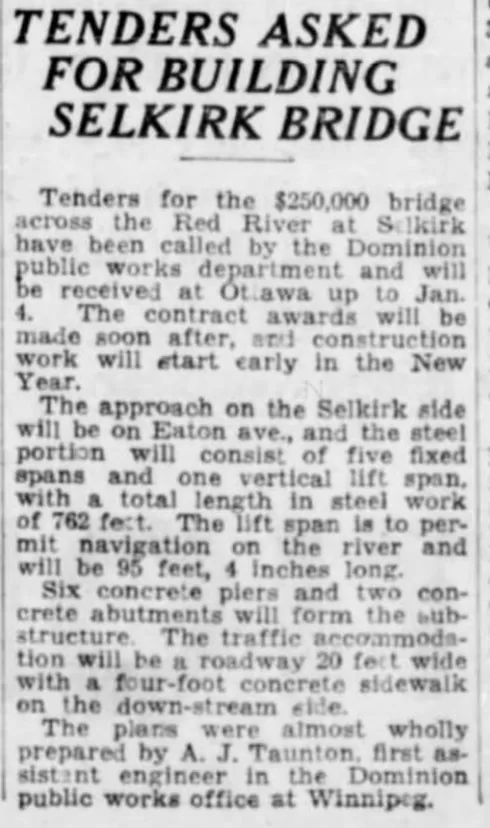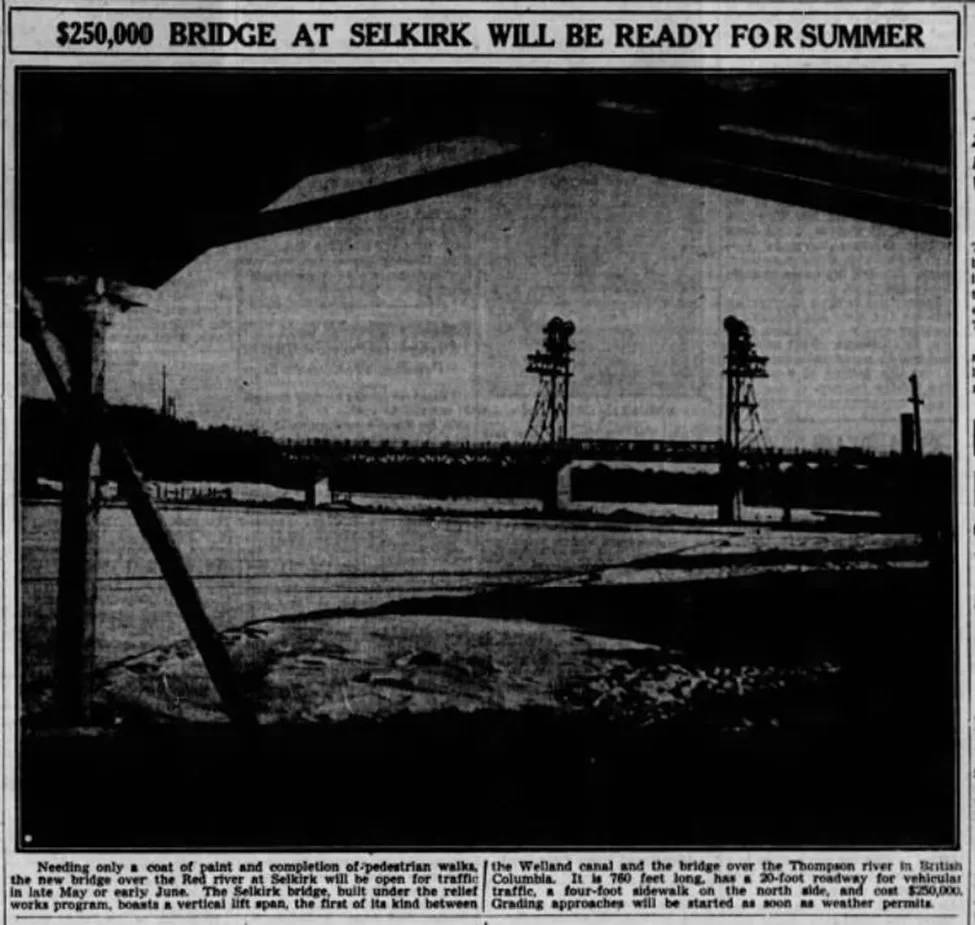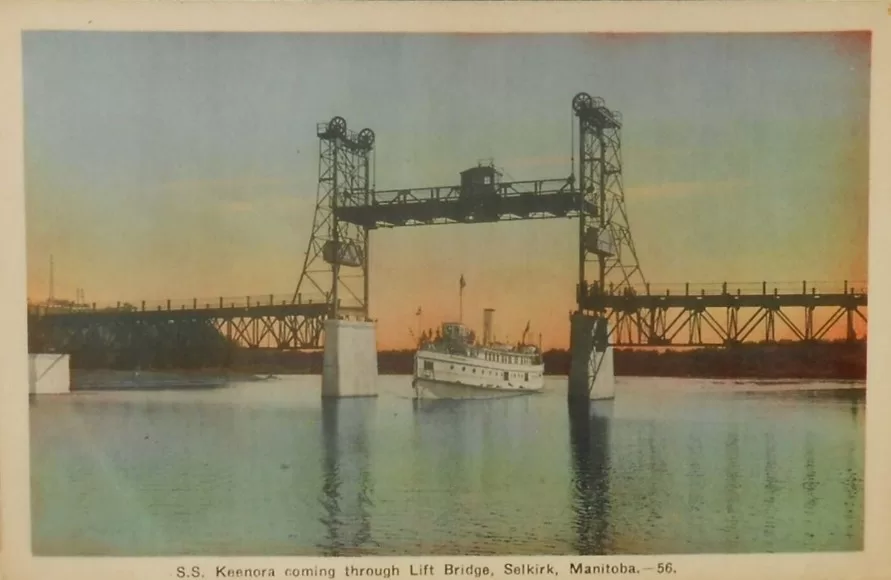The Selkirk Lift Bridge is the last remaining lift bridge in Manitoba. Before its opening in 1937, the only way to cross the Red River near Selkirk was at the St. Andrews Lock and Dam. This bridge was completed in 1914, the same year that World War I started.
The construction of the Selkirk Lift Bridge was announced in 1934 as part of a $40 million national infrastructure program. Manitoba received $4 million dollars from this program with $250,000 for the Selkirk to St. Clements Bridge. Three possible locations were proposed, one at Clandeboye Ave, Eaton Ave, and McLean Ave. Eaton Ave was eventually chosen by the assistant engineer for the Federal Department of Public Works in Winnipeg, Arthur J. Taunton.

To accommodate the high volume of large ships like the Keenora and tall mast ships moving along the river, the bridge needed to have a lift mechanism. The bridge was to be funded by Municipal and Provincial Governments, however, at the time the Great Depression was in full swing and the local governments did not have enough funds to cover the cost of the bridge. The Provincial Government deferred financial responsibility to the municipalities. In an effort to produce cash flow for the bridge project, the Federal Government proposed a toll of 25 cents per vehicle and five cents per pedestrian. This idea was quickly shot down by Selkirk’s Mayor, Robert Smith and St. Clements’ Reeve, Robert Sharp.

Despite debates between governments, the bridge began construction in February of 1935. By April of 1936 the bridge was nearly complete. The official opening was set to happen in May of that year but there was only one problem. No one wanted to take ownership of the completed bridge. Owning the bridge meant paying for the upkeep, which no one had the money to do so. The Federal Government may have paid for the building of the bridge, but maintenance and upkeep were left to the municipalities. Since no one wanted to take responsibility for the bridge it was left unused with the middle span raised for boat traffic.
On April 29, 1937, just under a year after completion, wood planks were placed against the bridge to act as approaches and a man named Ed Maloney lowered the bridge so that pedestrians and vehicles could use it. Officials from Public Works and Dominion Bridge were sent to close the bridge, but when they arrived, they were met by members of the board of trade, municipal figures, townsfolk and their pets demanding that the bridge remain open. The crowd allowed officials to make sure that the bridge was safe for operation, which resulted in the bridge being raised slightly to allow pedestrians across but not vehicle traffic. On May 3rd, 1937, the bridge was officially opened and at 12:45 pm the bridge was lowered completely so that vehicles could cross. The whole town attended the opening. A few excited individuals cut a hole in the ice and jumped in to mark the momentous occasion.

Since its opening, the bridge has undergone many repairs. In the 1970s the bridge underwent some minor repairs. In 1990 the bridge was assessed and found to be in “disgraceful condition.” It was closed on January 6, 1992, to begin repairs. It reopened on September 12 with a vintage car parade. The Selkirk Bridge was vital to connect St. Clements and Selkirk. Times were hard during its construction, but it connected communities and gave jobs to those that needed them. It is a symbol of our community.

